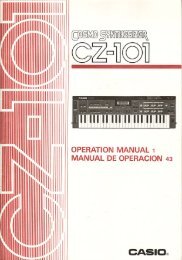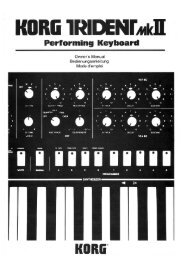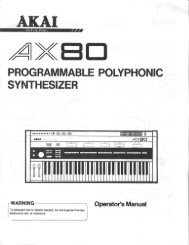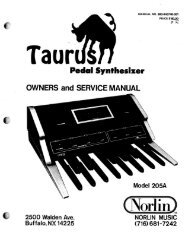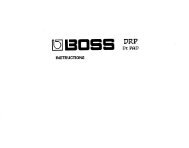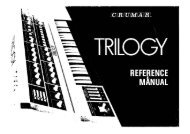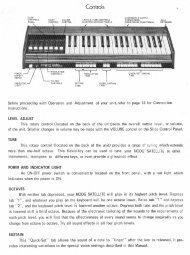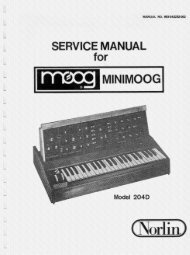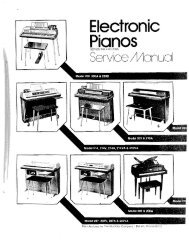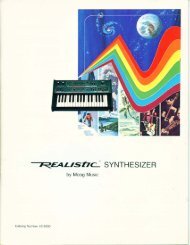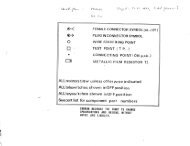Alesis Micron Owners Manual.pdf - Fdiskc
Alesis Micron Owners Manual.pdf - Fdiskc
Alesis Micron Owners Manual.pdf - Fdiskc
Create successful ePaper yourself
Turn your PDF publications into a flip-book with our unique Google optimized e-Paper software.
64<br />
6 Programs<br />
AnlgDrft<br />
Set the amount of simulated analog drift, up to 100%.<br />
Analog synthesizers have circuits that drift out of tune over time.<br />
Adding a touch of drift can increase the realism of the <strong>Micron</strong>’s<br />
analog emulation.<br />
Osc Sync<br />
Set how the oscillators synchronize to one another.<br />
off<br />
The oscillators sound independent of one another.<br />
hard 2 to 1<br />
Hard sync resets oscillator 2 to the beginning of its waveform<br />
whenever oscillator 1 hits the beginning of its waveform. This has<br />
the effect of forcing oscillator 1’s fundamental frequency onto<br />
oscillator 2. This behavior is called “hard sync” because the slave<br />
waveform is “snapped” to zero at the frequency of the master<br />
oscillator, which can create a harsh, rough sound even out of sine<br />
waves.<br />
hard 2+3 to 1<br />
Oscillators 2 and 3 are forced to “hard sync” to oscillator 1.<br />
soft 2 to 1<br />
Every time oscillator 1 begins its cycle, oscillator 2 reverses<br />
direction. The resulting wave has no sharp edges, as it does with<br />
hard sync, but exhibits a mixture of harmonics that can have<br />
interesting sonic properties.<br />
soft 2+3 to 1<br />
Oscillators 2 and 3 are forced to “soft sync” to oscillator 1.<br />
FM Amount<br />
FM, or “frequency modulation,” allows you to use one oscillator<br />
to control the frequency of another. Set the percentage by which<br />
the target oscillator’s frequency is affected by the master<br />
oscillator’s waveform.



